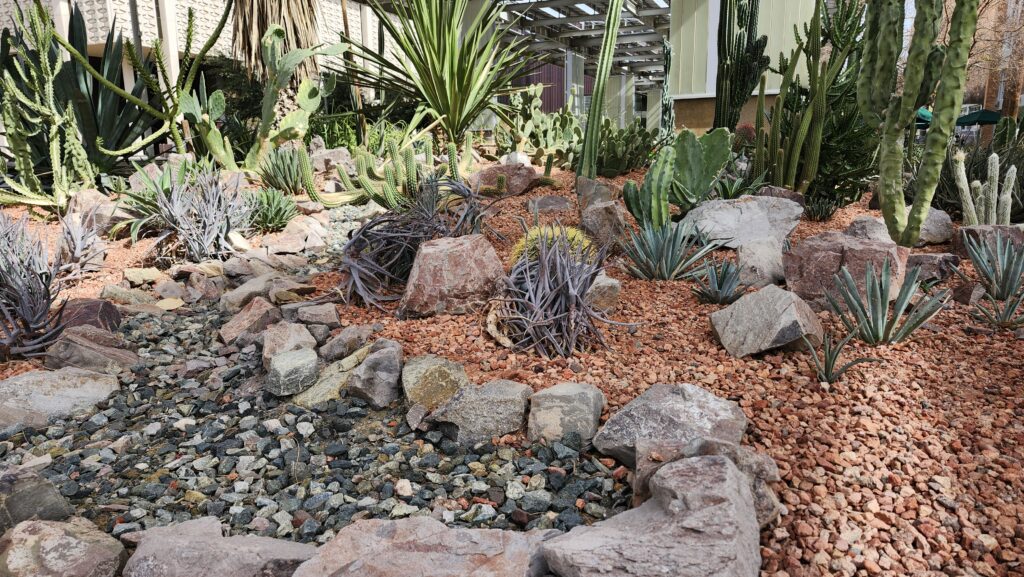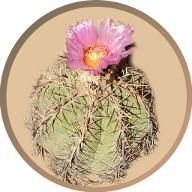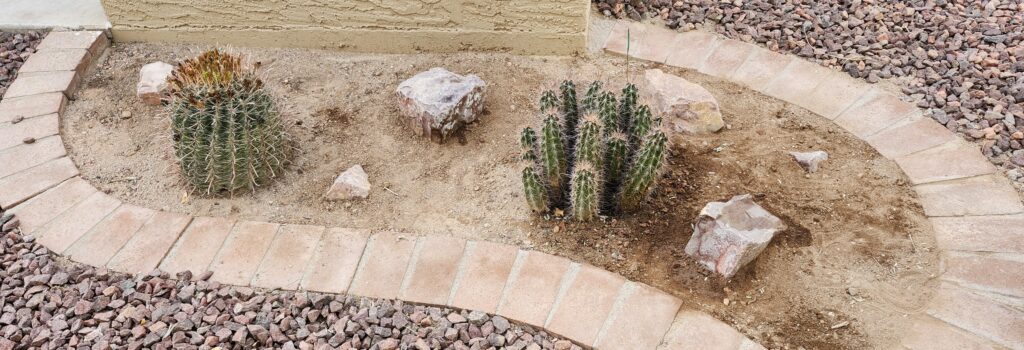
Planting cacti in the ground can be challenging, and not just because of the spines! For good design, you don’t want other plants to overshadow your cactus, but you also don’t want a cactus to be isolated. This is especially a problem for smaller cacti, that can easily be covered by a bush or even a small flower. Planting cacti next to other cacti works, but it can often end up looking unnatural. One solution for smaller cacti is a rock garden.
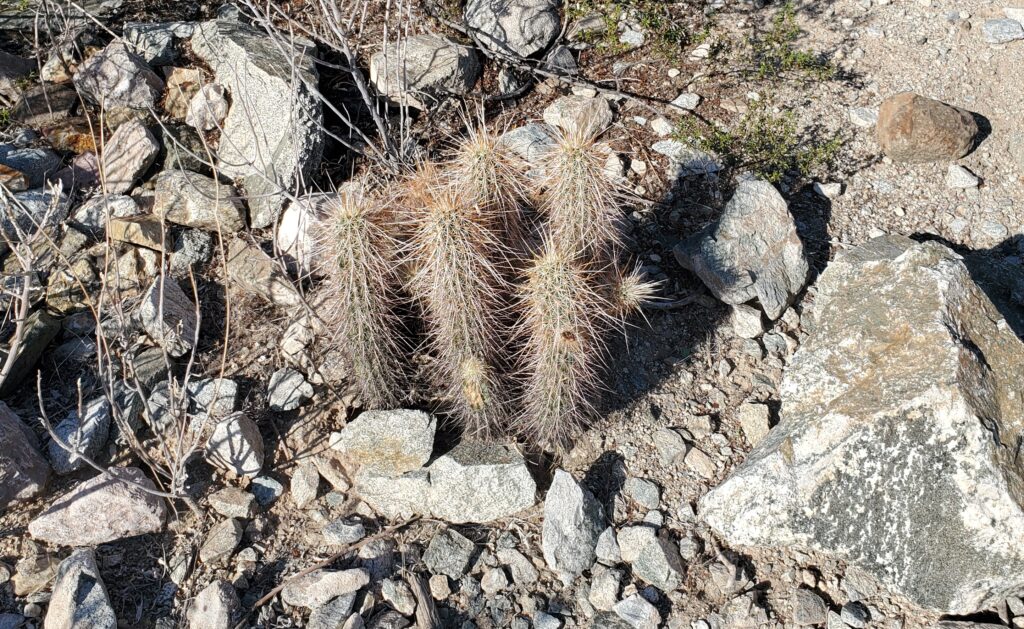
The rocks make the garden look more natural. If you look at the habitat of many desert cacti, they often grow next to rocks. The rocks actually help to trap moisture in the soil so that the cactus roots can stay wet longer during the sparse desert rains. They can also assist with lowering soil temperature and preventing erosion. So a cacti rock garden is functional as well as asthetically pleasing.
In the garden, I recommend using rip-rap and some larger boulders. Sizes from 4″ to 2′ are useful. If you use very large boulders they may overwhelm your cacti and be difficult to re-position. Try to place your rocks in a way that looks natural. The rocks are not permanently fixed, you can experiment with different setups until you find something ideal. Placing rocks too close to cacti may affect their growth, but if the rocks are too far away, the benefits of moisture and soil cooling may be missed.
Dig the rocks 1-3 inches into the ground using a spade. This will make them look like they belong. Make sure you don’t place them on top of the gravel!
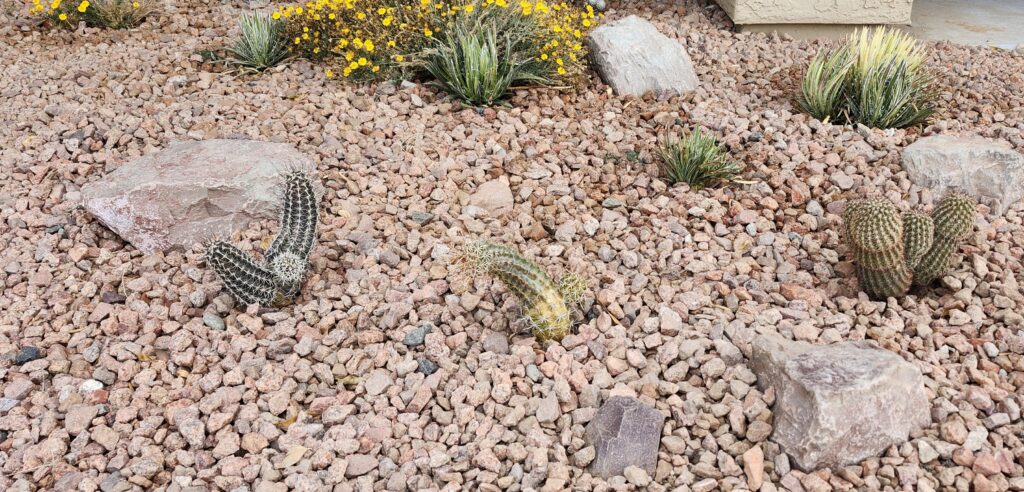
This technique also works well with succulents, including agave. A mixed bed of small cacti, agave, and rocks works well. Finding some very small flowers to soften the landscape can also help. In my garden I like to use Fiveneedle Prickleleaf (Thymophylla pentachaeta) or Emory’s Rockdaisy (Perityle emoryi). Just make sure it is a low growing flower relative to your cacti!
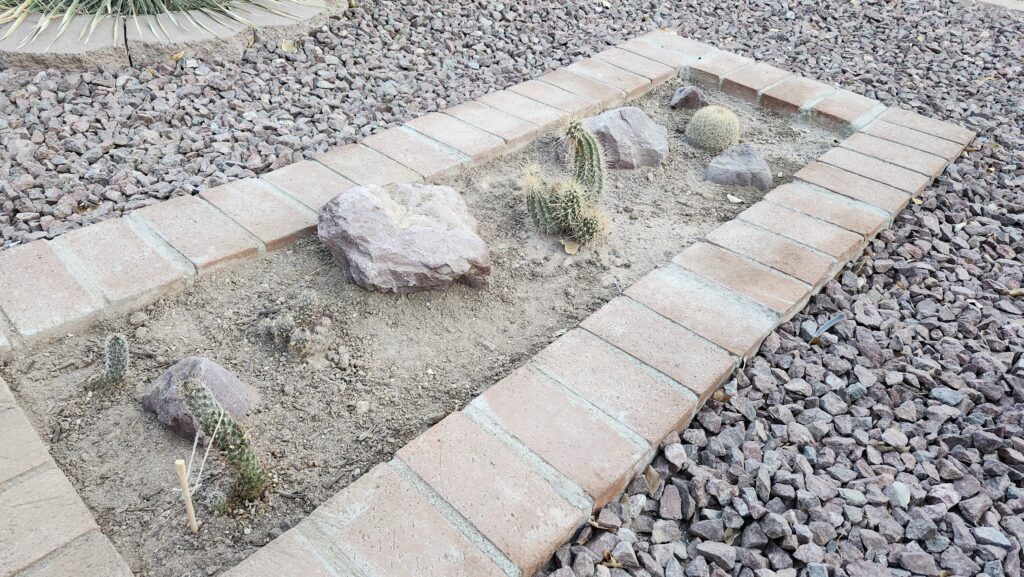
One additional benefit of rock gardens is supporting animal habitats. Have you ever turned up a rock, log, brick, or paver and found insects or other animals like lizards underneath? This is not surprising, as the animals also appreciate the improved conditions with additional moisture and protection from the sun. I have even found tunnels with lizard eggs under pavers in my garden. Logs made from cuttings from desert trees can also work in the garden to support wildlife like lizards and insects. If you want to ensure that your logs don’t get eaten by termites, I would suggest desert ironwood (Olneya tesota) cuttings, as the wood is so dense and filled with mineral deposits that it cannot be eaten by most termites.
